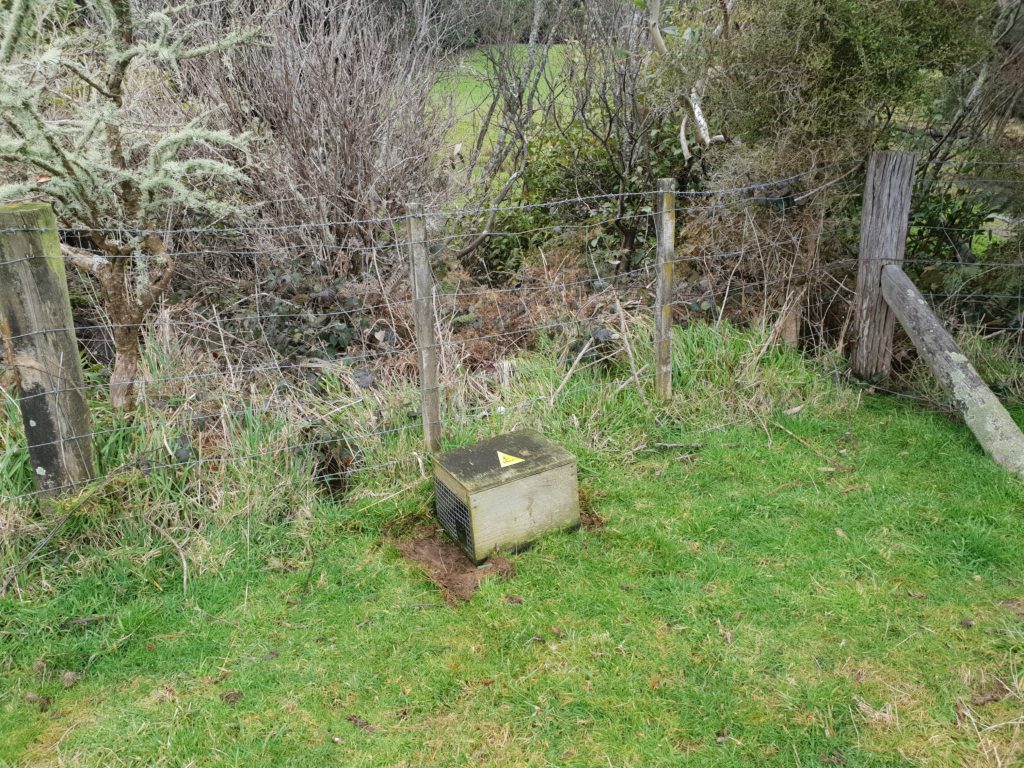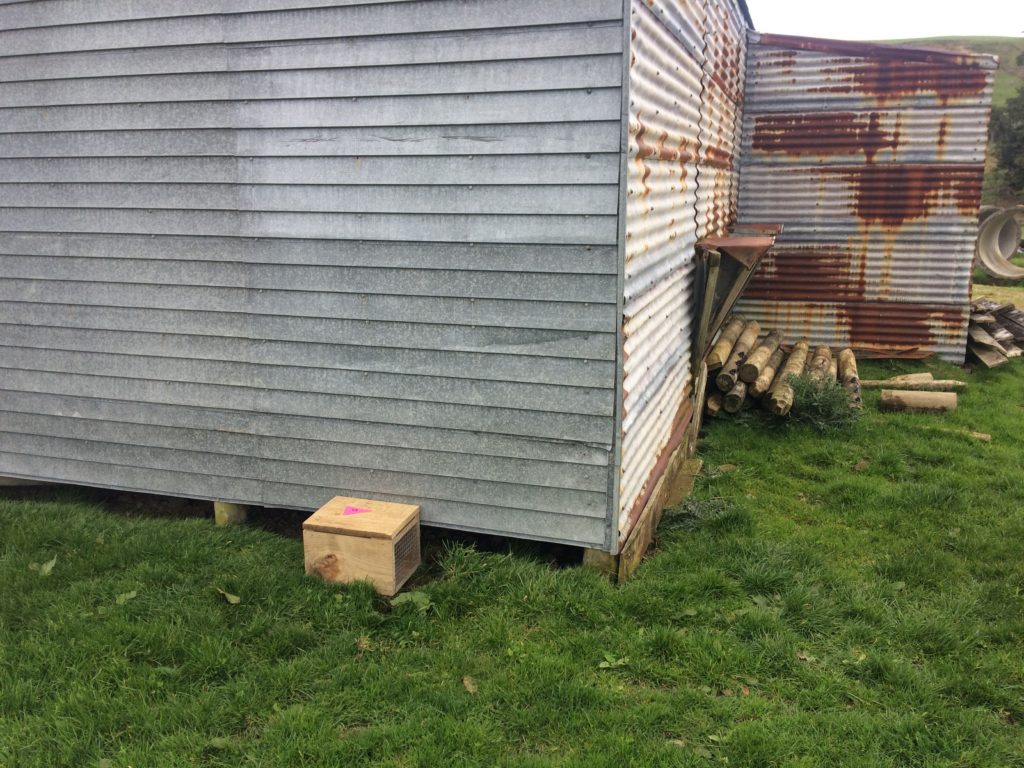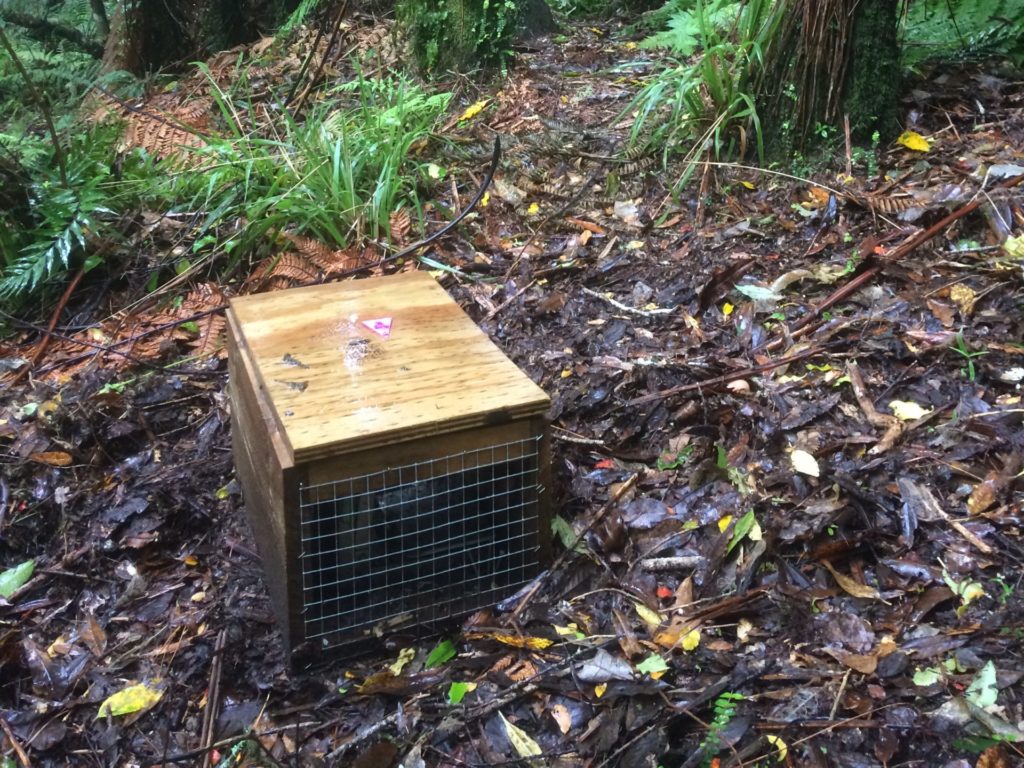This is the third blog from our guest writer John Bissell. Read his introductory blog and his second one on trap selection. This blog covers trap placement and for species with bigger home ranges it can really make a difference. Place the trap where predators have the greatest possible chance of encountering it.
There is good science around how many traps you need per square kilometre or hectare to target certain species. I call that ‘macro placement’. However, I like to ensure each individual trap is placed in the best possible spot. So, for me, I consider this density recommendation as a good place to start but the placement of each individual trap also needs to be optimised.

Placement depends on the species being targeted and the nature of the country being trapped. For example, rats in contiguous native forest are best dealt with as a density per hectare with even spacing to ensure you have traps inside every territory. They can have very small home ranges. It can be quite different in farmland where there will be areas where no rats will be present (in the middle of short open paddocks for example). As habitat and food availability changes, so too can an animal’s home range.
Apex predators though, in my opinion, are suited to more targeted trapping networks. I like to take the density recommendations and then apply them to the best possible spots. If a site looks really ‘likely’ then I will test it with a trap. I sometimes even end up with more traps per sq km than the recommended average. I might do this and then test it. In a year or two I can refine my regime.

So, where are my preferred sites? This often comes down to where predators are most likely to hunt. I like to think that if they are actively hunting, they will also be more likely to interact with your trap as well. For the likes of mustelids and cats, these places are the scrub edges, road edges, fences lines, creeks and ridges. The big one in most cases is trapping on the edge of cover. That is where their prey is most common and is where they will hunt most often. If you can find a site on a creek where a fence and scrub edge intersect then you are on to a winner. Get the picture? Think linear edges. This is different to possums who will target a lone tree in a paddock.
Keep an eye out for things out of the ordinary that may attract predators too. For example the offal pit, compost bin or farm rubbish dump. Or an individual tree in the bush that is seeding or fruiting. Dead animal carcasses can also be productive. Even if a predator is not actively feeding at a spot, they may be targeting rodents who are. Rabbit warrens, chook sheds and feed bins (where rodents abound) can all be worth looking at. Hedge rows are also a ‘hot spot’ as are the pampas wind breaks. Stoats love these. The bush has less ‘defined’ hot-spots, but think creeks and ridges/spurs. These are the first places I like to run a permanent trap line.

The final hotspots are tracks, bridges and culverts, I target these areas in any project I am working on. If you want to minimise reinvasion in your project, then trap the road edges and bridges that lead into your zone from outside your area. Apex predators are great travellers who love a bit of roadkill too. Use that to your advantage. I like to call it the three R’s — Rivers, Ridges and Roads. Different species will favour different travel routes. Ferrets, for example, travel waterways more than ridges. I catch a lot of stoats on ridges.
In the bush I prefer to place traps on and parallel with the actual trap line. Predators will run these tracks and if the trap is in their face, they can’t help but encounter it. Some people place the traps up above the track and dug into the bank, but I feel there is a greater chance of a ‘pass by’ with this set up. Hazing is another popular trick and can help. Essentially you place log or similar alongside the trap so that it creates a linear effect that a predator may run along and up to the entrance.

I see a number of traps around placed up off the ground to help reduce risk to non-targets. That is fine, but I would far rather place all my traps on the ground and use designs that protect the innocent in other ways. In my opinion placing a trap up a ramp or on a post is an extra step, and not a small one. It might be OK for possums, but cats and mustelids are primarily ground hunters, so keep things on the ground if you can. I know that stoats hunt up trees, but I see them on the ground more often.
The other thing to note is that often we will catch more in a certain trap for no particular reason. In one project I have three traps within a 100m area at the intersection of three creeks. It is a really ferrety spot. One trap has caught six and the other two have caught none. I firmly believe that our apex predators in some areas also travel along ‘runs’. The problem is that they don’t leave a trail. So, we need to test it with traps.
I would also suggest that you pay particular attention to the location of any sightings. They may just be showing you one of their cards. When I place traps, I like to think that even a blind member of the species I am targeting would bump into it! So, if network density is ‘macro trapping’, really good placement is ‘micro trapping’. You need both. It is a combination of the little things that make the big difference.

As a trapper with a lot of experience targeting certain species, I often trust my gut on where a trap should be placed and how it should be oriented. It can make a huge difference. Once again trap placement should be based on seeing the country through ‘their’ eyes, not just yours. So the next time you are doing your trap line, take a good hard look at every trap set and think, “could it be in a better location/ position?”.
Within any wider habitat there will always be hotter areas. Take the time to stop and think first about the best trap sites and work these into the density needed. Don’t just put traps out and assume that the predators will bump in to them.
It is also really important that you do things in a coordinated way, so please check with your manager or project lead first before you go out and start moving stuff everywhere. I don’t want to be bombarded with hate mail from frustrated managers!

